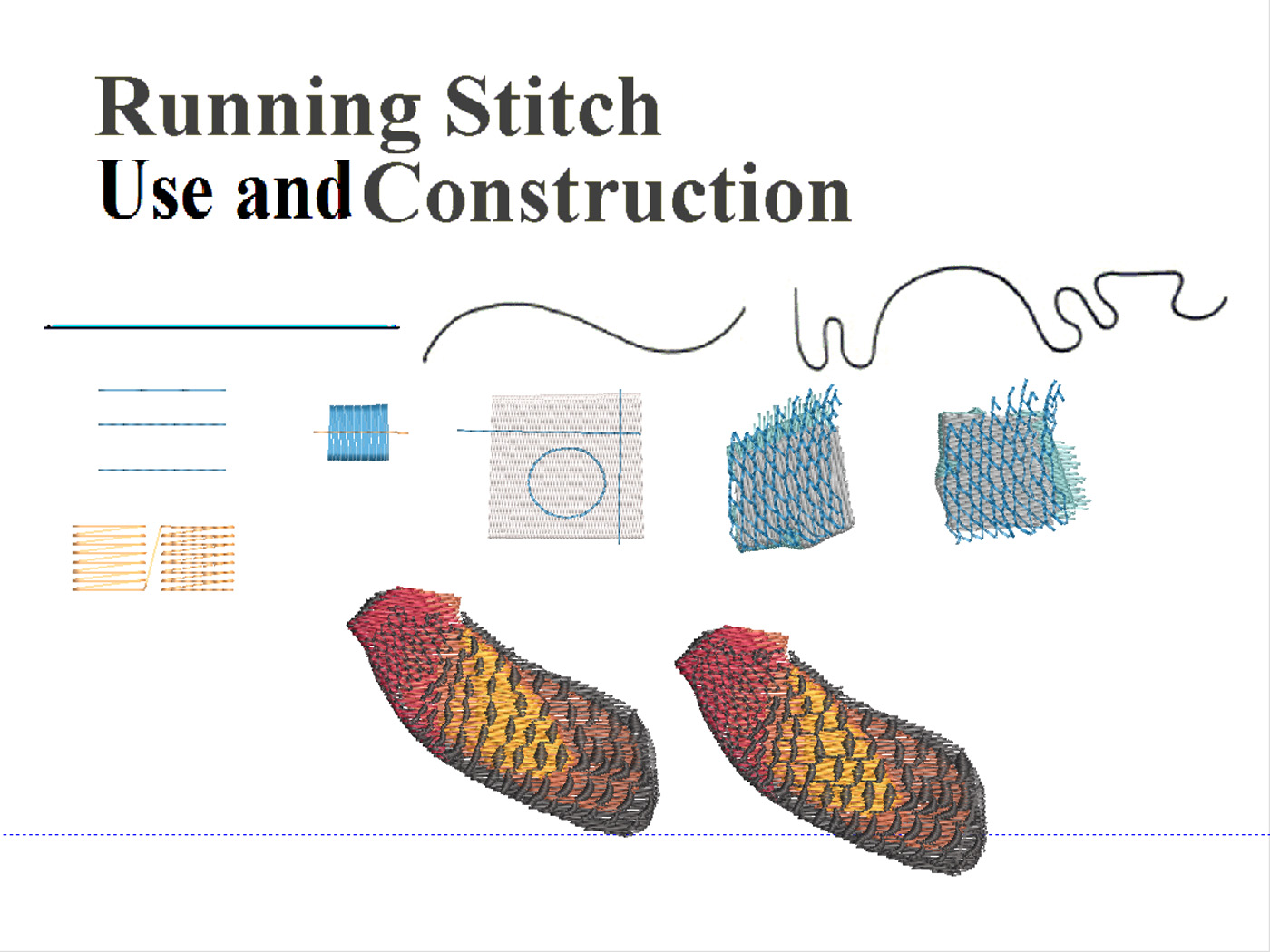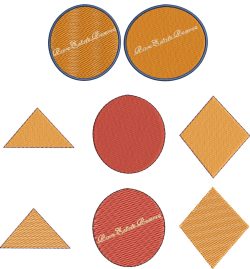Description
We hope you enjoyed the Webinar on Examining the role that the Running
Stitch plays in our Designs.
Our Homework is stitching out the exercises you saw demonstrated in our Class. You will
Not need to actually digitize most of these exercises. However, you may need to change Lengths
and Densities of the running stitch in one or more of these examples to see what happens.
The first three images across the top are the construction of a running stitch; the first is a straight line,
the second a curved line, and the third is a combination of straight and cured lines. Notice the
Length of the stitches that it takes to copy the small curves. Notice, too, that if you do not shorten your stitches, you will not get the curve.
Next: is three straight lines at different length of running stitches. Note the gloss in the long stitches, Note the stability of the short stitches.
Next: You will be stitching out a column stitch that is about one half inch wide. On top of it you will stitch a running stitch. Notice how the needle penetrations displace the thread in the column stitch.
As each stitch finishes, it pulls the thread together leaving gaps in the design. This is why it is necessary to use manual underlay if you are placing a column stitch on top of another Column stitch.
Next we have a fully stitched Fill or Tatami with a run stitch running on top of it. The horizontal stitches are running the same direction as the fill. The vertical running stitch and the circular running stitch sit up on top and will be easily seen. The Horizontal running stitch will sink in and parts of it will be lost.
Next is a part of our Tarpon Design that gives you Texture using your running stitch. The first example has the Fill or Tatami running vertically. This will give you a looser finish and more texture. The second example has the fill stitches running horizontally. It will stitch out tighter and give you less texture.
Next: Is another group of loose stitches. This example was created by using the running stitch. Notice that when you decrease the length of the stitches, the horizontal run stitch AND the returning stitch that runs from the right to the left all are affected by the decrease in the length.
Finally, you have the belly of our Pheasant. The fist example has no running stitches to support the edge of the column stitch. Notice how much more the black columns, or statin stitches, sink into the background fills, when there is no running stitch to give definition to the edge of the column.
I hope that running these Examples, gives you the information needed for decisions you will make using your Running Stitch.
In our next Class we will be adding the Column or Satin Stitch to the Running Stitch to take the two Groups of stitches even further than possible on their own! See you then!
You no longer need a Coupon Code, as the price is marked at $0. Enjoy





Reviews
There are no reviews yet.